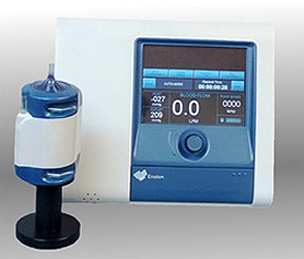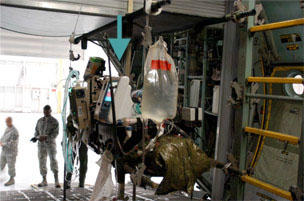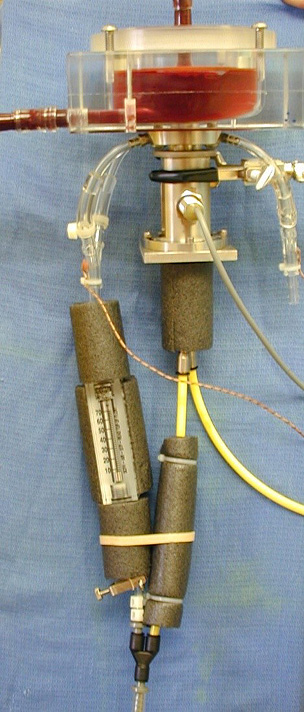Extracorporeal life support systems (ECLS)Ension has developed a highly portable advanced compact ECLS (ACE) system based on an integrated pump-oxygenator. This system accommodates both pediatric and adult application through use of modular pump-oxygenator unit and is suitable for both short-term (e.g., intraoperative cardiopulmonary bypass) and as chronic applications such as ECMO, extracorporeal lung assist, and extracorporeal CO2 removal (ECCO2R). A principal feature of this system is an extension of the Ension bioactive surface (EBS). The covalently-bonded heparin-based bioactive surface was developed for the unique requirements of ECLS applications. The EBS was designed to mitigate activation of cellular elements in the blood, development of thrombi, and minimize overall systemic inflammatory response.
Critical care transportIn cooperation with the Critical Care Aeromedical Transport Team (CCATT) training program at the USAF School of Aerospace Medicine, the logistitics of incorporating an ACE with the current equipment for transporting critically ill patients has been explored. These evaluation exercises have taken place at Wright-Patterson AFB in a C-130 Hercules trainer. The compact size and ruggedness of both the pump-oxygenator and controller console of the ACE system in addition to potential benefits of the EBS surface makes the system attractive for this challenging application for both civilian and military patient transport.
System for Inducing HypothermiaDespite the deployment and increasingly effective utilization of automatic external defibrillators (AED) survival of in-field cardiac arrest remains woefully inadequate due to several factors. First, time-to defibrillation is critical. Though survival rates of 48 to 74 percent have been reported when a shock is delivered within 3 to 5 minutes, the discharge rates in controlled studies remains less than 20 percent. This rate is even lower if complete neurological recovery criteria are included. After the initial 3-5 minute period, it has been estimated that a patients chance for survival decrease 10 percent per minute. Beyond 10 minutes, the likelihood of recovery with conventional resuscitative techniques such as CPR is less than 10 percent since simple cardiopulmonary resuscitation (CPR) typically provides only a fraction of the normal blood flow required to maintain cellular viability. Clearly, an intervention is needed that can improve the survival of these arrest patients if immediate resuscitative methodologies such as CPR and AED are unavailable or fail. Such a system would ideally support critical physiological functions allowing an extension of time vis-à-vis a "safety net" to treat the patients' underlying arrest syndrome. Ension has a small, pneumatically-powered (compressed oxygen gas) system that simultaneously cools and pumps blood while also transferring oxygen and carbon dioxide. This system based around an "active mixing" pump-oxygenator device developed by Ension in prior work provides key physiological support necessary to extend the time to better treat the patients' underlying arrest pathology. Furthermore, the incorporation of cooling leverages much work suggesting inducing mild hypothermia is a key to preserving neurological and other organ function.
|
Ension’s portable Cardiopulmonary Assist System (pCAS) with all blood contacting surfaces treated with the heparin EBS surface matrix
Military evaluation of the portability and ruggedness of the Ension pCAS system for patient transport
|




